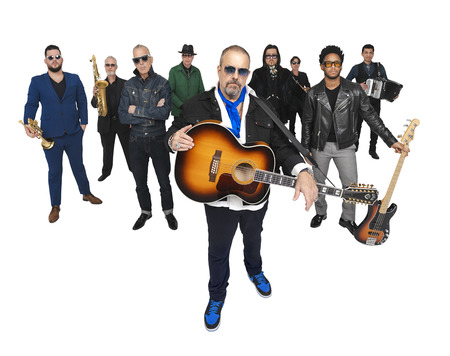The Mavericks - CANCELLED

Under 21 with Guardian
The Mavericks have always been explorers.
For decades,they've created the kind of multicultural Americana that reaches far beyond America itself, blending their favorite stateside sounds — including rock & roll, country, and R&B — with Tex-Mex twang, Cuban rhythms, Jamaican ska, and other Latin influences. Theexploration continues with Moon & Stars, a progressive album thatfinds Raul Malo and company continuing to push the envelope,exploring the outer orbits of an organic, otherworldly sound that remains entirely their own.
"This record took us to places we've never gone before," says frontman, co-producer, and chief songwriter Malo, whose voice — a booming baritone that continues to agelike top-shelf whiskey and fine leather, becoming richer and more pliable with each album — remains one of the band's calling cards. "It's a collection of tales from the universe. We've traveled around the world, gathering new stories and new sounds, and this is what we have to show for it. Moon & Stars is our cosmic energy put into practice."
It's also the sound of a band that refuses to belimited by its own legacy. Three days after receiving the Trailblazer Award at the2021 Americana Music Honors & Awards,The Mavericks hit the highway once again, resuming the busy touring schedulethat's kept the band in sharp shape. Joined by longtime co-producer Niko Bolas,they recorded portions of Moon & Stars while on the road, setting up camp at studios in Santa Fe, New Mexico, and Maurice, Louisiana, before finishing the record at home in Nashville.Tracking sessions were fast and inspired, built around the chemistry of four musical brothers — Malo, guitarist Eddie Perez, keyboardist Jerry Dale McFadden, and drummer Paul Deakin — who'velogged thousands of hours onstage together, racking up multiple Grammy, ACM, and CMA Awards along the way.
The Mavericks Website
